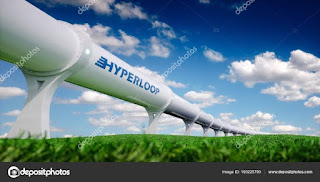Hyperloop
Hyperloop is a proposed mode of transportation that involves high-speed travel in a low-pressure tube. The concept was first introduced by entrepreneur Elon Musk in 2013, who suggested that it could offer a faster, more energy-efficient alternative to traditional high-speed trains, airplanes, and other forms of transportation.
The Hyperloop system would involve using magnetic levitation to propel pods through a tube at speeds of up to 760 miles per hour (1,200 kilometers per hour). The tube would be mounted on pylons, elevated above the ground to avoid interference with other forms of transportation, and equipped with a low-pressure environment to minimize air resistance.
One of the proposed advantages of the Hyperloop is its potential to significantly reduce travel time. For example, a trip from San Francisco to Los Angeles, which normally takes about six hours by car or one hour by plane, could take as little as 30 minutes using the Hyperloop. Additionally, the system could be powered using renewable energy sources, making it more environmentally friendly than many current modes of transportation.
While several companies are actively working on developing Hyperloop technology, there are still significant challenges to be overcome, including concerns around safety, scalability, and cost. However, proponents of the technology believe that it has the potential to revolutionize transportation and change the way we travel over long distances.

